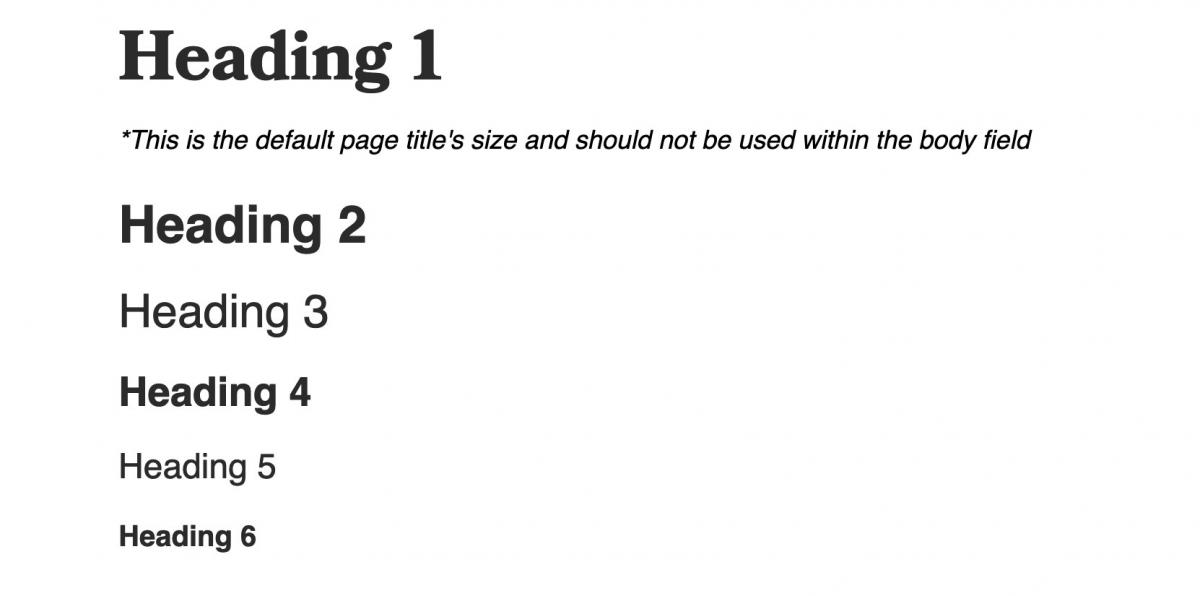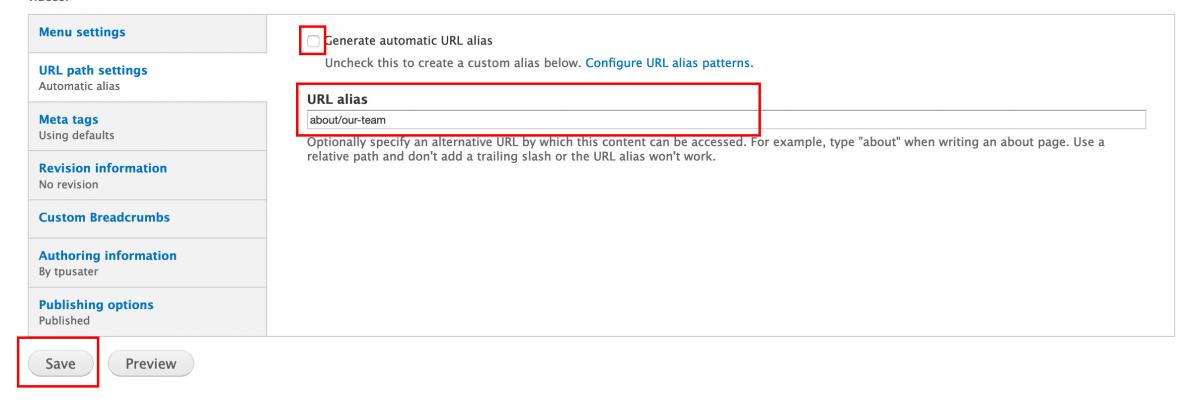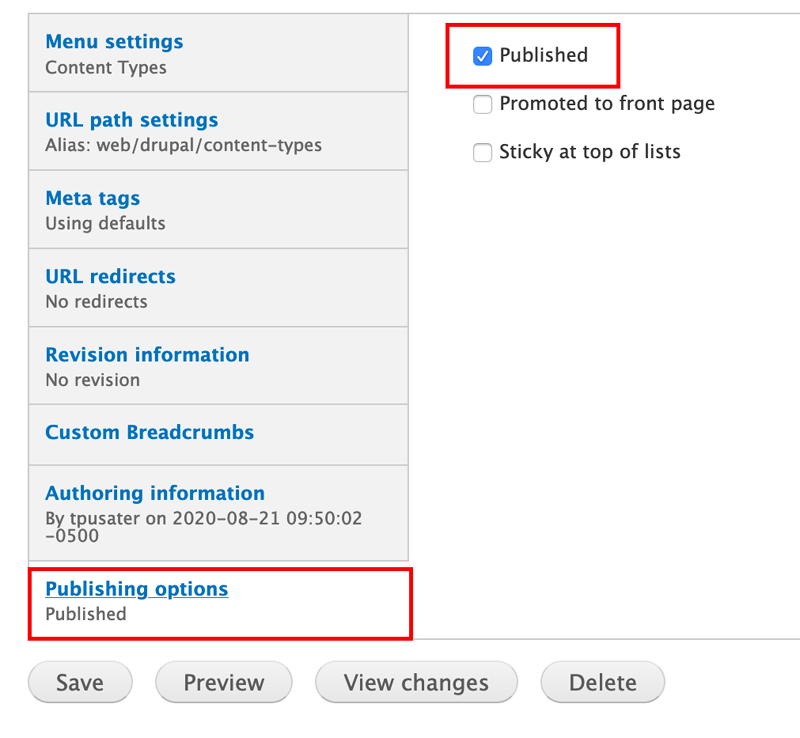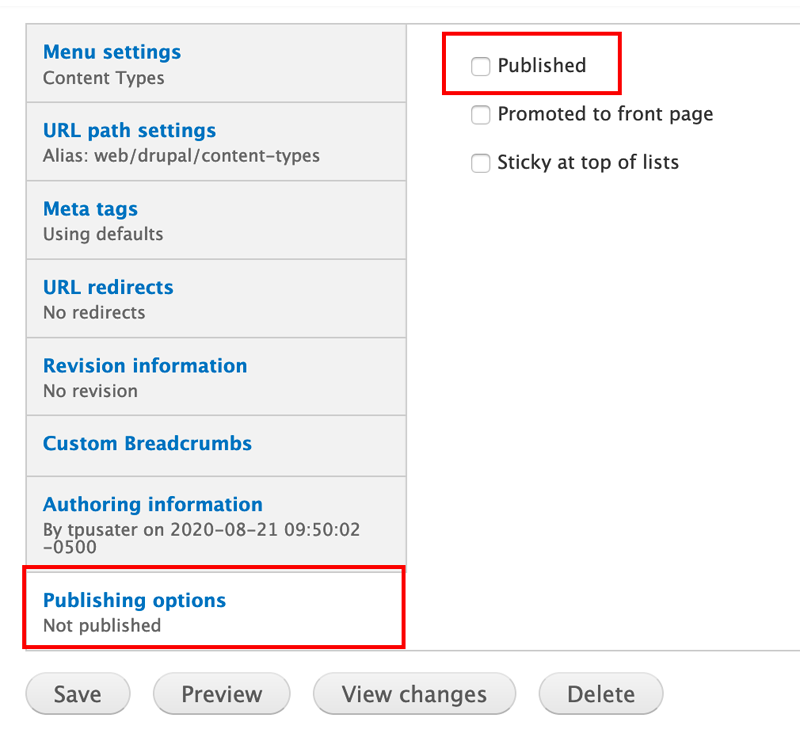- Click Manage on the top black nav menu
- Click Content on the white sub-nav menu
- Click +Add Content at the top
- Click Universal Page
- Fill in the following *required fields: Title, Body
**Scroll down to the dropdown right below the Body field and select Full HTML from the Text format dropdown menu; this will give you an expanded toolbar
There are 6 heading sizes within Drupal. Heading 1 <h1> is the page title's size. It should not be used within the body field.

To change your text to a header size, click the Normal dropdown menu on the body field toolbar and select the heading size. As a rule, headers should descend in size as you move down the page.

- Image Upload icon
- Link icon for linking to pages outside of your website
- LinkIt icon (has a + sign) for linking to pages within your website
- Templates icon (first row, top right) – has column templates, accordion menu template etc
If you want this page to live on your menu, check off “Provide a Menu Link” below the body field.
Go to the Parent Item dropdown and select where you want this page to live (what parent page should it live under?)

**If it should live on the green primary navigation, then select “Primary Navigation” as the Parent item.
If you have created a new page, you need to customize the url:
At very bottom of page under Body field, Uncheck “Generate automatic URL alias” box and manually type in your custom url path in the URL Alias Box below. Do not put a / in front.
Example: You’ve created an Our Team page under About section of your site. Your url path could be entered in the field like this: (no / in front of the first word, all lowercase)
about/our-team
Example: You've created a new primary navigation menu item called About. Your url path could be entered in the field like this: (no / in front of the first word, all lowercase)
about

**If you saved the page first and forgot to change the url path:
- Click Content on top bar
- Click edit next to that page title
- Scroll down to bottom left sidebar – click “URL Path Settings”
- Change url path
Click Save at bottom
By default, when you create a page and click Save, the page is published and "live."
If you added the page to a menu, then the public can find your page right away on the navigation menu.
If you did not provide a menu link, the page is live, but no one will be able to find it on your navigation menu. A person could access it via search or by having the direct url link.

If you are working on a draft and would rather keep the page unpublished, click on "Publishing Options" in the bottom left sidebar and uncheck Published. Then click Save button.
Note: The page's background will be a light pink to denote that it is unpublished.

Editing an Existing Universal Page
You can either navigate directly to the page you want to edit or you can use the search filter to locate a page.
Using the Search Filter:
Click Content on the white navigation bar. Use the search bar at the top of the page to filter by:
- Title
- Page Type
- Author
- Published or Unpublished
- Vocabulary
Then click the Apply button to see a list of filtered results populate below. Once you find the page you want to edit, click edit to the right of the page title.

Using the Editing Gears:
- Navigate to the page you want to edit.
- Click the gear to the right of the page title or the gear to the top right of the body text – it will say Edit Field.
- Click Edit Field and it will take you in to edit that section of the page.

